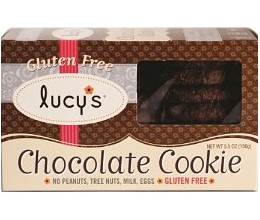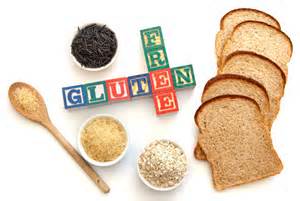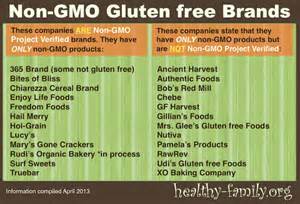Identify Gluten Issues: Allergies, Cross Contaminates & Effect
Shop & Eat Smart. Feel Better
How To Overcome Gluten Reaction – Six Steps
Are you or someone you know diagnosed with Allergens to Gluten or Celiac Disease?
Diagnosis with allergens means sensitivity to gluten and any products made with it.
The Gluten Free Diet With Nutrition’s purpose is to provide a wide variety of gluten free products for breakfast, lunch, dinner and snacks. Variety helps the one allergic to enjoy the same type of foods and discover meal time can be enjoyable.
Product Ingredients and Nutrition Label Information Matter
We believe in arming you with adequate information. Hundreds of products are offered here and we provide the product ingredients and nutrition label information. Proper knowledge helps you plan meals with adequate vitamins and minerals for someone with gluten intolerance.
Generally, individuals who are on a gluten free diet do not receive enough nutrition with the gluten free products they eat and therefore lack some vitamins, minerals, fiber, and protein. These are vital nutrients to sustain proper growth and weight control. Most individuals who are sensitive to gluten are most likely to be under weight because they do not eat enough to sustain their daily intake of calories. So, it’s important that they monitor their weight to ensure that they do get enough daily.
It’s important for people who have Celiac disease or are allergic to gluten eat enough and at the same time get the proper nutrition. It is vital that proper nutrition from the gluten free products be received from foods consumed. Otherwise, the meals must be supplemented with gluten-free vitamin and mineral pills.
What Is Gluten
Gluten is a mixture of proteins found in all grains. They are composed of two primary subfractions:
- Prolamines – The most studied as it relates to celiac disease
- Glutelins
How Is Reaction To Gluten Defined?
The two basic types of gluten reactions are: allergies, and intolerance or sensitivity.
Gluten Allergy
This is typically considered to be an allergy or an immune mediated response by the immune system in the body. This alone is not Celiac disease. If not treated, it can become Celiac disease.
Gluten Intolerance
Gluten intolerance is considered to be an inability to tolerate gluten a non immune mediated response by the body. The body has a reaction to ingested foods even though they may be gluten-free.
Gluten Sensitivity
Gluten sensitivity is also known as intolerance.
How To Overcome Gluten Sensitivity – Six Steps
It all boils down to knowing the six basic steps to overcoming gluten sensitivity with a gluten free diet.
Step One: Identify The Symptoms
So you know what you are dealing with. Is there just an allergic reaction or is Celiac disease present? Here are the details to help you identify the symptoms.
 Step Two: Identify Foods Containing Gluten
Step Two: Identify Foods Containing Gluten
Knowing which foods contain gluten is a must. Print the list and keep it in the kitchen. Failing to avoid foods containing gluten will cause further sensitivity and discomfort. Here are the foods that contain gluten.
 Step Three: Know Your Cross Reactors
Step Three: Know Your Cross Reactors
Just avoiding gluten is usually not enough because there are gluten cross reactors. Learn what the cross reactors are and find out if any of them are causing you sensitivity.
 Step Four: Prevent Cross Contamination
Step Four: Prevent Cross Contamination
Much cross contamination can be prevented. Learn how to prevent as much additional contamination as possible. Here is the detail for preventing cross contamination.
 Step Five: Make A List And Buy Gluten Free Foods
Step Five: Make A List And Buy Gluten Free Foods
Even though many products contain gluten, usually a product is also available in the gluten-free form. We hope you are pleasantly surprised by the number of products available to you. The gluten free foods are display and listed by category.
 Step Six: Identify Gluten-Free Side Effects
Step Six: Identify Gluten-Free Side Effects
Going gluten-free does have side effects. Know what the side effects are so you can deal with them. Here’s the detail about gluten free side effects.
Gluten Free Food List
More and more grocery stores are carrying gluten free food selections. Which is very good for consumers who have someone in their family diagnosed with Celiac disease or are allergic to gluten. The following is a list of foods that are gluten-free:
- Almond meal flour
- Amaranth
- Beans (In their natural unprocessed form)
- Coconut flour
- Dairy products
- Fish (Not breaded, batter-coated or marinated)
- Flax
- Fresh Eggs
- Fruit
- Gluten-Free Flours (rice, soy, corn, potato, bean)
- Guar Gum
- Hominy (Corn)
- Legumes
- Nuts (In their natural unprocessed form)
- Pea flour
- Potatoes
- Quinoa
- Meats (Not breaded, batter-coated or marinated)
- Seeds (In their natural unprocessed form)
- Tapioca
- Vegetables
Cross Reactor Gluten-Products
If you are on a Gluten-Free Diet, the following Cross Reactor foods may cause sensitivity:
- Soy
- Corn
- Yeast
- Oats
- Rice
- Millet
- Dairy
Products That May Cause Gluten-Sensitivity
If you have gluten-sensitivity, the following list of products may cause further sensitivity:
- Buckwheat
- Bulgur
- Durum flour
- Farina
- Graham flour
- Kamut
- Nut products
- Semolina
- Spelt
- Food additives, such as malt flavoring, modified food starch and others
- Medications and vitamins that use gluten as a binding agent
- Play dough
Cross Contamination Concerns
However, one of the biggest concerns for family members with Celiac disease or gluten sensitivity is that some of these food items can get easily cross-contaminated by people handling foods that contained gluten or on places where gluten was prepared.
Here is an excellent definition of cross-contamination by Dr. Peter Osborne of Gluten Technology:
“Cross contamination is when gluten comes in contact with gluten free foods thus contaminating it.”
Food is being prepared in the same pot or pan that gluten food was in and is not washed properly will contaminate gluten free foods. Be sure to have separate breadboards, pots, pans, and utensils from those being used with gluten foods. Also, counter tops should be cleaned before preparing gluten-free meals on it and be sure to wash your hands before touching gluten free foods.
Check With The Manufacturer About Their Products
If you are not sure if a product is totally gluten-free, always contact the manufacturer. Each food product has the manufacturer and usually a phone number you can use to contact them. They can tell you if any portion of the product was processed on equipment that was in contact with gluten or not. Otherwise, it will be contaminated and should not be consumed by anyone with celiac disease or it may cause someone to have an allergic reaction to the product being consumed.
Always read the product label before purchasing. Just because the package says it’s gluten free it may not be. Be sure you read through the list of the ingredients on the label and look to see if any of ingredients listed may contain gluten in it. If you are not sure, contact the store manager. If they cannot provide you the information then contact the manufacture of the product. Do not purchase until you are sure it’s safe to consume.
Read Step Four: How To Prevent Cross Contamination
Categories For Shopping
To make your shopping easier, we have listed the products by category.
Some of the categories include: Breakfast, Lunch, Dinner, Cookies, Bread, Snacks, Deserts, Mixes, Pasta, Cereal and a lot more.
Over 400 products are identified by category to help you find your product of interest.
Helpful information is provided for each product: a detailed description, nutrition facts, a list of ingredients, and a shopping link.
Be Pleasantly Surprised. Gluten-Free Foods Taste Good.
Check Out Specific Favorites



